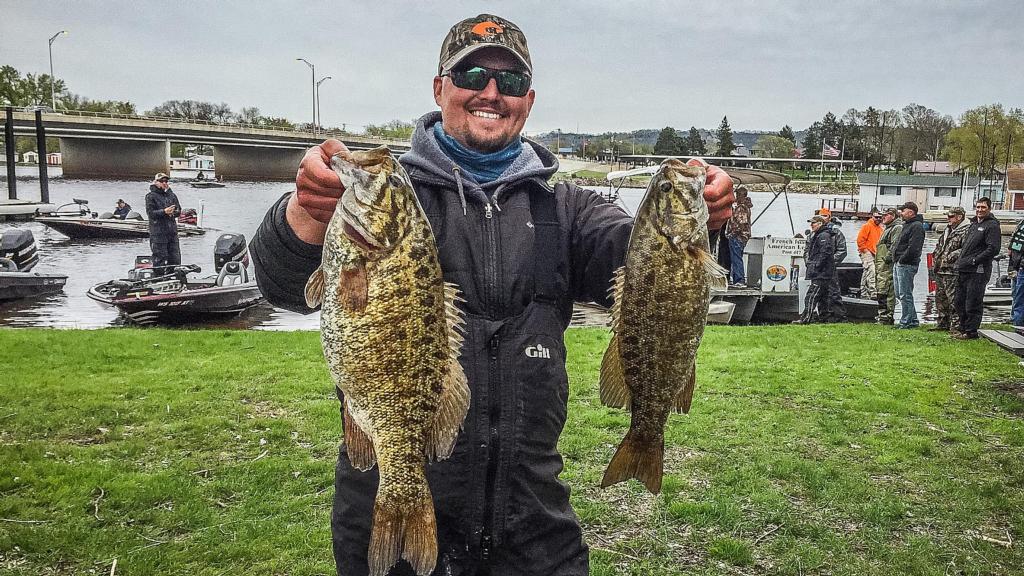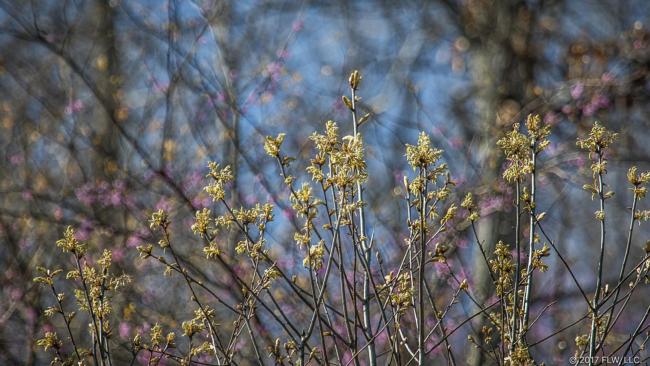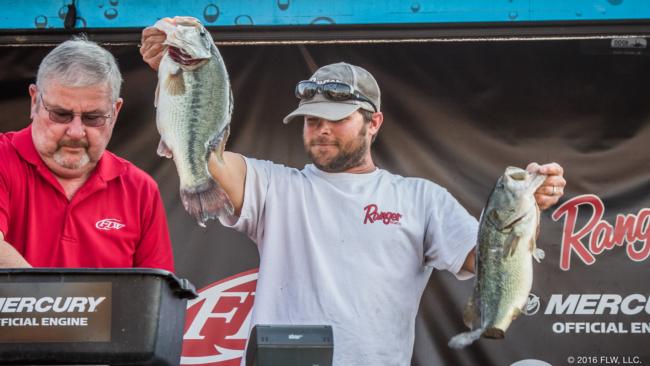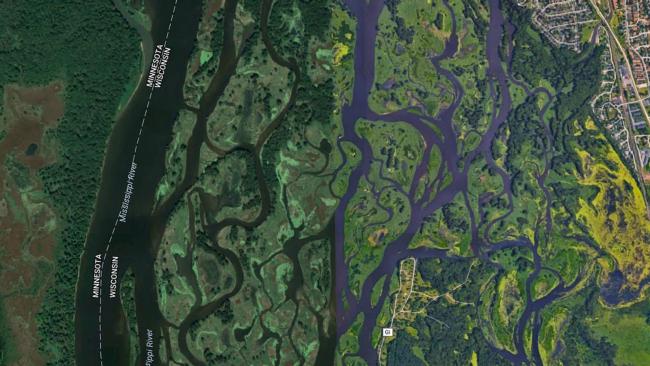Looking Ahead to La Crosse
The sixth stop of the FLW Tour heads north to the Mighty Miss

The 2017 FLW Tour schedule has provided a refreshing change of scenery for most of the pros when you consider that three of the previous fisheries have had little to no history as past Tour stops. That trend continues as the Tour turns north toward La Crosse, Wis., May 18-21 for the sixth stop of the season on the Mississippi River and Pools 7, 8 and 9.
While the Tour has never competed here, there have been a handful of Costa FLW Series derbies at La Crosse, although they have usually taken place in the summer or early fall. The only May tournament history FLW has on the river has been at the T-H Marine FLW Bass Fishing League level.
For that reason, we decided to pick the brain of a few BFL river rats who have a solid track record on this section of the Mighty Miss to get the lowdown on what this arena will have in store.
Timing
As far as major pro-level tournaments go, B.A.S.S. has held several Elite Series events in La Crosse over the last few years, but they too have only been in early summer or fall. While some of the same general areas that produced fish in those tournaments might be a factor, the river is a whole different beast during the spring.
“The river is fast and high right now,” says Mike Brueggen, a BFL stud from La Crosse, Wis., who holds 24 top-10 finishes on the river – four of which were victories. “The water temperature was close to 60 degrees in some areas [two weeks ago], but we had a cold front come through and it dropped the temps down almost seven degrees. That just shows how quickly things can change this time of year, and who knows what it’ll be like when the Tour gets up here.”
Making predictions this far in advance on a system as volatile as Ol’ Man River is, without question, a tough task. The water levels could rise or fall in a short time, either congregating the fish or spreading them out across the numerous backwaters. Only time will tell how that will factor in.
The only things that can really be counted on are the types of cover that will hold fish. Anything from rock, sandbars and wing dams to laydowns and grass will have a role in this event.
According to Brueggen, grass will be the biggest factor.
“I think that young grass will be the biggest target for [the Tour pros],” Brueggen explains. “Stuff like coontail, lily pads, arrowheads or any grass that is green and starting to grow will have a lot of fish on it. Not to say there won’t be fish caught off wood or sandbars, but that grass can be good.”
The 2017 BFL event on the Mississippi River held on April 29 was won by Cade Laufenberg – an established river standout who had a distinguished YETI FLW College Fishing career with Winona State University – after he sacked up 22 pounds, 3 ounces. If you ask him, this is prime time to be on the river.
“This is my favorite time of year to fish, for sure,” says Laufenberg, whose recent tournament-winning catch was all smallmouths. “[At the BFL two weeks ago] I weighed my biggest sack of fish ever on the river and had my personal best. Now, it’s not something you can do every day, but the possibility to catch them like that is great on every pool.”
Bags like Laufenberg’s aren’t uncommon in early May. In fact, the first Great Lakes Division event on the Mississippi back in 2016 was won with 20-15 – also all smallies. Crushing big smallmouths in a single-day event is one thing, but consistently doing it over the course of four days in a Tour event is another.
Brown vs. green
The Mississippi River holds both smallmouths and largemouths in great numbers. While smalljaws have dominated the last two May BFLs, the number of 2 1/2- to 3-pound largemouths in the system is unreal. However, the smallmouths on average tend to run a little bigger. In order to win a multiple-day event, both species need to be on your radar.
“Smallmouths on the river are a big wild card,” says Brueggen. “They can be here one day and gone the next. You can’t count on one species to win it. You definitely need a mix to last over four days of competition.”
Laufenberg agrees with Brueggen in terms of having a mixed bag in order to take a shot at the title.
“You can’t win with all largemouths or all smallmouths,” echoes Laufenberg. “To win you need both. There is going to be a day when the largemouths don’t bite as well and a day where the smallmouths don’t. Having a plan for each is a must.”
Of course, you can’t talk about a springtime bass tournament without taking into consideration where the fish are in their spawn cycle. Because both Minnesota and Wisconsin have seen unusually high temperatures followed by severe cold fronts throughout much of the spring, a wide range of spawning activity will likely be seen.
“The cold front that passed through [during the BFL] slowed things down in terms of spawning,” Laufenberg explains. “What I’m seeing right now is that some of the largemouths are starting to push back up. I imagine they will keep at it, and that should mean there will be some postspawn fish for the Tour event. I’m pretty sure there will be fish in all three stages, though.”
Navigation
While some locals favor one pool or another, the truth is that fantastic fishing for both species of bass is available throughout the three pools in play.
“All of the pools are neck-and-neck I’d say in terms of fishing, and especially when it comes to smallmouths,” Laufenberg says. “Pool 8 could be so much better, but because it gets so much pressure because of all the tournaments that take out of there it kind of evens all of the pools out.”
Laufenberg’s point brings up one of the biggest obstacles pros will face in this event: traveling between pools.
Barge traffic on the river this time of year is busy and can ruin a game plan in a heartbeat when it comes to locking up or down a pool. Brueggen and Laufenberg agree that some pros will fall victim to getting locked out, and others will strategically play it to their advantage – especially on the final days when unpressured water becomes even more valuable.
“This tournament will come down to a few guys figuring out two different pools,” Laufenberg adds. “They just won’t have enough time to figure out all three pools, but they should be able to figure out a milk run of spots between two pools.”
The other factor Brueggen notes is that because most of the pros have never been to the river, simply navigating the backwaters will be a major challenge. Sandbars change from year to year, making it tough for even locals to get around when exploring new water. Don’t be surprised to see some boats being towed off of shallow flats with the help of air boats in this one.
Hazardous boat rides and barge traffic aside, this should be a killer tournament. If you like seeing fish caught, then you better tune in to FLW Live during the Mississippi River event. Add in that this tournament is critical to the race for Angler of the Year and the cut to qualify for the Forrest Wood Cup, and the La Crosse event has a little bit of everything to make it interesting.
Tournament details
Format: All pros and co-anglers will compete for two days. The co-angler champion will be crowned on day two, and the field will be cut to the top 20 pros on day three and the top 10 pros on day four. The winners will be determined by total cumulative weight.
Takeoff Time: 6:30 a.m. CT
Takeoff Location: Veterans Freedom Park, 1 Clinton St., La Crosse, Wis.
Weigh-In Time: 3 p.m. CT on days one and two; 4 p.m. CT on days three and four
Weigh-In Location: Veterans Freedom Park all days


